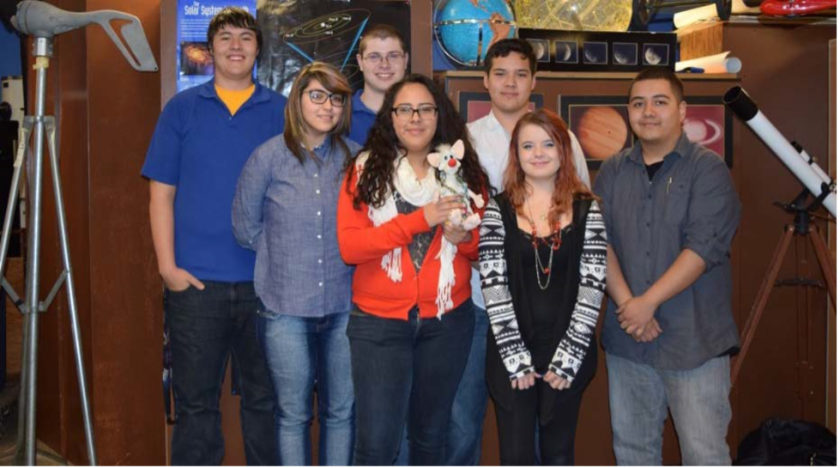That’s part of the reason why we were excited by the opportunity to work with the International Association for Astronomical Studies (IAAS) – a 501(c)3 STEM program that has a 40+ year record of success in helping youth succeed in the sciences through their immersive and intensive astronomy and aerospace research projects and activities.
This year, the IAAS program had a special need for a distance learning hub in rural Colorado. Knowing that remote learning opportunities are more important than ever, we donated a Poly Studio X50 to help build the infrastructure that will connect students to teachers so they can prepare them for a career in STEM.

We spoke with Chris Rand, Chair of the Board at IAAS to learn more about the organization and how Poly’s technology is helping connect the innovators of tomorrow.

IAAS students at work
A CONVERSATION WITH CHRIS RAND – CHAIR OF THE BOARD OF IAAS
The IAAS program was founded over 40 years ago by Professor Jim Moravec – an accomplished professional astronomer, scientist, and educator who has guided hundreds of students through the program – including Chris.
Chris first got involved with IAAS as a sophomore in high school, and he quickly became immersed in the projects, trips to planetariums and observation centers, and a global economic summit where the group presented to the leaders of the world.
Today, Professor Moravec, assisted by a team of space science experts, program alumni like Chris, and several parents of current students run this hands-on program with the intent to reach more students like him. The IAAS program stokes excitement about the sciences and prepares students for careers in the field. One of the best features of the immersive, hands-on program is that all the research is credited to the ‘the kids’ (as Prof. Moravec and Chris refer to them).
They have worked with over 1,200 students from all around the world.
MAKING STEM EDUCATION ACCESSIBLE FOR ALL
One of Chris’ favorite things about IAAS is its focus on inclusivity. The IAAS works with students no matter their economic or education – and being a community-driven organization means that all their budget goes to operations so that the program can be free to students. “We don’t care where you come from,” Chris shared, “you could come from the richest part of the country or one of the more economically disadvantaged areas. Our students work together and are equals, and we make sure of that.”
The idea for a distance learning hub in Colorado came out of a desire to reach more students in disadvantaged areas – particularly the Eastern Plains of Colorado, which is in a technological deficit resulting from low population densities and few educational opportunities beyond basic curriculums.

Group photo of a few IAAS students
IAAS wanted to bring their knowledge and expertise to an area that could truly benefit from it, so they found a site in eastern Colorado for the new Star Haven Observatory – a world-class facility with optical observatories, a research library, classroom space, and a multimedia studio to provide educational and community access. In a district that can currently only afford one computer for every 10 students, this distance learning hub will lift some of the financial burden so the schools can focus funds on the basics, while students get a specialized STEM education that they wouldn’t otherwise have access to.
That’s where Poly solutions come in. IAAS is taking a multi-media approach to daily science lessons, and they will reach thousands of students through our cameras. Chris shared that, “Through the Poly system, we can allow the districts to focus on taking care of the students, and we’ll take care of the other pieces of the puzzle – multiple cameras, interactive distance learning technology, video conferencing, whiteboards, virtual demos – all these technologies will allow us to teach in this new forum at no cost to them.”

Breaking ground on the new Star Haven Observatory site
Construction on the site is nearly complete, and we look forward to hearing more about the launch of the Star Haven Observatory. In a time when remote learning is not only possible but a part of daily life for so many students and teachers, we are constantly inspired by the new ways our solutions can be used to further education and inspire innovators around the world.
The distance learning hub will reach thousands of students – and the IAAS program results speak for themselves. Over 90% of their students have gone on to receive bachelor’s degrees, and their alumni have gone on to take part in some of the most innovative projects of the century. The IAAS is teaching the leaders of tomorrow, and we are proud to be a part of their journey.
For more information about Poly solutions for education, visit poly.com/education.








